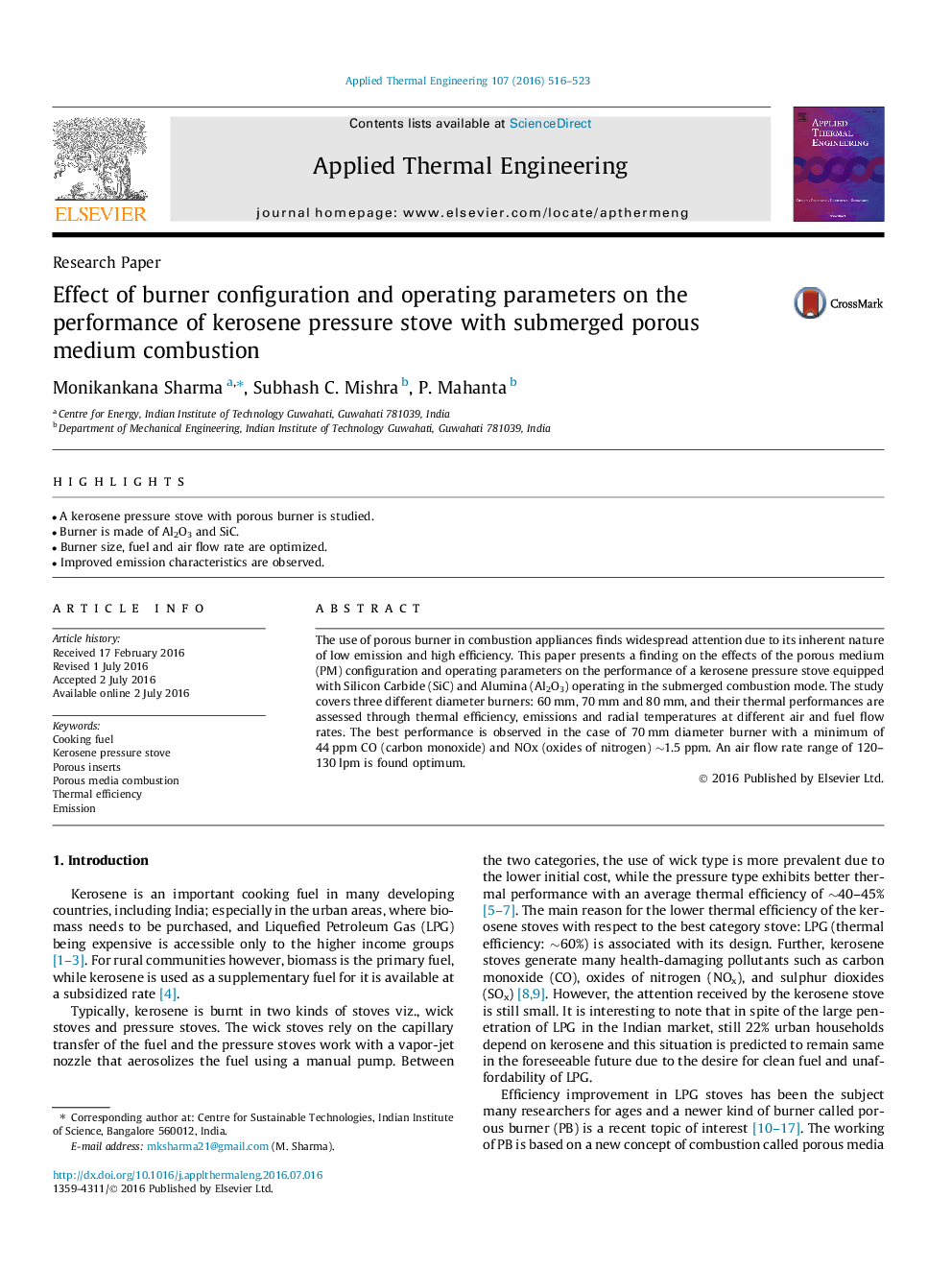| Article ID | Journal | Published Year | Pages | File Type |
|---|---|---|---|---|
| 7047190 | Applied Thermal Engineering | 2016 | 8 Pages |
Abstract
The use of porous burner in combustion appliances finds widespread attention due to its inherent nature of low emission and high efficiency. This paper presents a finding on the effects of the porous medium (PM) configuration and operating parameters on the performance of a kerosene pressure stove equipped with Silicon Carbide (SiC) and Alumina (Al2O3) operating in the submerged combustion mode. The study covers three different diameter burners: 60Â mm, 70Â mm and 80Â mm, and their thermal performances are assessed through thermal efficiency, emissions and radial temperatures at different air and fuel flow rates. The best performance is observed in the case of 70Â mm diameter burner with a minimum of 44Â ppm CO (carbon monoxide) and NOx (oxides of nitrogen) â¼1.5Â ppm. An air flow rate range of 120-130Â lpm is found optimum.
Related Topics
Physical Sciences and Engineering
Chemical Engineering
Fluid Flow and Transfer Processes
Authors
Monikankana Sharma, Subhash C. Mishra, P. Mahanta,
